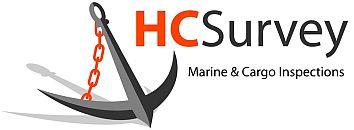Draught-Survey or Draft-survey
Draught or Draft, that's a good question.
Language is our method of communicating. It can be audible, visual, tangible and even olfactible. Looking around I came across this list:
See - Visible/(Seeable*)
Hear - Audible/(Hearable*)
Smell - Olfactible (used very rare)/Smellable
Taste - Edible (for food)/Potable (for water)/(Tastable*)
Touch - Tangible/Palpable/Tactile/(Touchable*)
Returning to the title, the difference between 'draught' and 'draft' is based on the origin of the english: In British English, draught is used primarily for (1) a current of air, (2) an animal that pulls loads, (3) a load pulled by such an animal, (4) a portion of liquid, and (5) the act of drawing liquid into the mouth. And British writers use draft for (1) a written plan or preliminary sketch, (2) an order for a bank to pay money, (3) conscription into the military, and (4) the act of selecting someone for a role. American and Canadian publications use draft for all these purposes. Draught occasionally appears in reference to beer, but mainly in product marketing. Non-British varieties of English from outside North America tend to use the British spellings.
So, in other words, whichever you choose to use is correct.
